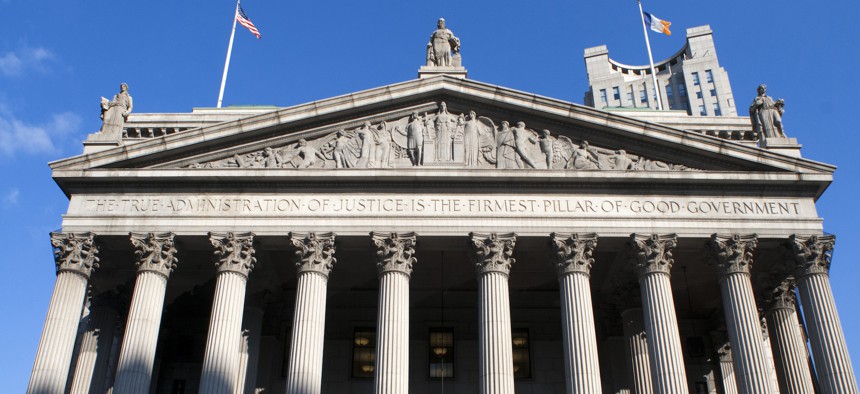The fight over the fate of Hector LaSalle’s nomination as state Court of Appeals chief judge has officially made its way to the courts. Now, the judiciary may have the opportunity to set precedent on how the state Senate must perform its duties under the state constitution, treading into politically fraught waters.
The first task for the state Supreme Court judge on the case is to determine whether state Sen. Anthony Palumbo, the Republican who filed the lawsuit, has standing – or has been harmed in a way the court can address. After the state Senate Judiciary Committee rejected LaSalle and the Democratic majority declined to give him a full floor vote, observers wondered who might sue over the decision – and who might ultimately have standing. Former state Chief Judge Jonathan Lippman, a LaSalle supporter, suggested last month that the question won’t pose much of a problem. “I think those thorny issues … as to who exactly has standing will be resolved,” Lippman said at a January press conference. “But clearly, the two branches of government – the Senate and the governor’s executive branch clearly have standing. … I don’t believe there will be a serious standing question here.”
In the end, Gov. Kathy Hochul did not bring a lawsuit. Instead, a lone state senator did. And while Palumbo may have standing as an individual member of the Senate deprived of his constitutional right to vote on a judicial nominee as part of the full chamber, at least one constitutional law expert said that it may make the lawsuit easier to dismiss. “If the governor were to bring a lawsuit, then you wouldn’t have the argument that all we have here is an internal dispute within one branch,” Vincent Bonventre, a professor at Albany Law School and author of the New York Court Watcher blog, told City & State. “If the governor brought that, it would be one branch telling another branch, ‘Look, I did my job, you’ve got to do your job,’ and you’ve got a clear constitutional question.”
The courts have previously chosen to weigh in on politically contentious issues. The landmark case Silver v. Pataki still gets regularly cited during budget negotiations due to its impact on the balance of power between the executive and legislative branches. The decision in the two lawsuits between former Gov. George Pataki and former Assembly Speaker Sheldon Silver – referred to jointly as Silver v. Pataki – granted the governor previously unprecedented authority to pass policy as part of the budget, something that ensuing governors have made great use of.
But the LaSalle lawsuit is particularly thorny, not just because it is between members of the same branch, but because the result could impact the future of the judicial branch. And it may very well make it all the way to the Court of Appeals, which has several judges – including the acting chief judge – who sought the chief judge nomination and could be considered again if LaSalle is ultimately rejected. “They’ve all got an interest,” Bonventre said. “But there’s a rule of necessity, and the rule of necessity is that somebody’s got to rule on this.”
Of course, the state Supreme Court justice who will consider the lawsuit must still make the decision whether to hear the case or to dismiss it outright under what is known as the political doctrine question. It essentially means whether the court itself has the standing to weigh in on an issue, or if it falls within the autonomy of another branch to determine how it conducts its business. For example, the state constitution gives the state Senate the authority to implement rules on its internal procedures, and the judicial branch won’t interfere with that. “Oftentimes, courts chicken out of a case by saying ‘Oh, that’s a political question’ because they don’t want to take the heat,” Bonventre said.
If the court decides to rule, the LaSalle case could set precedent on the extent to which the state Senate can set internal rules. A decision from the Court of Appeals that the Senate majority acted within its rights to determine the constitutional requirement of “advice and consent of the Senate” based on its own internal procedures could wind up having unforeseen consequences. For example, hypothetical internal rules could say that only the votes of the majority matter, or the chamber could set different standards for nominees based on race. While the prospect seems outlandish, the argument could be made depending on the court’s decision. “There are certain limits beyond which internal procedures cannot go,” Bonventre said. “That’s the question in the case.”


